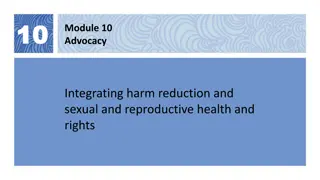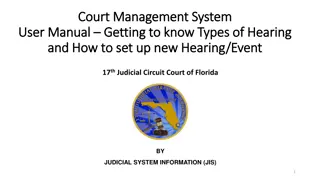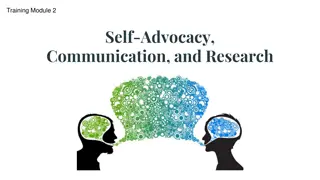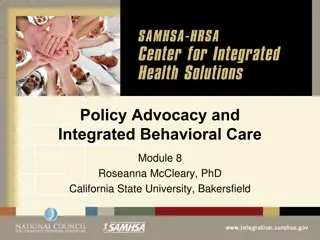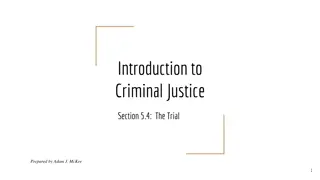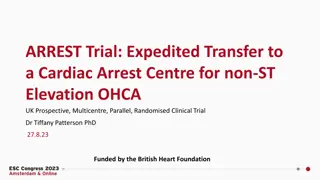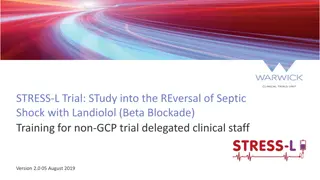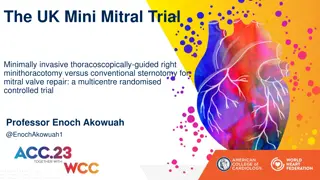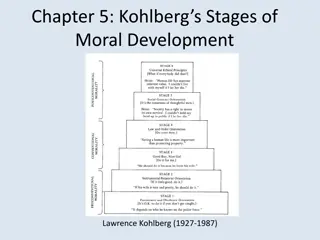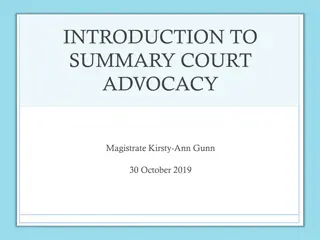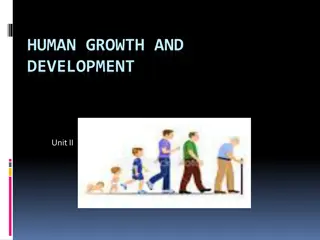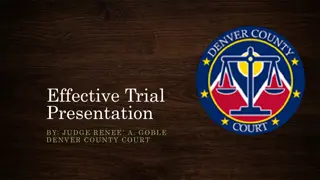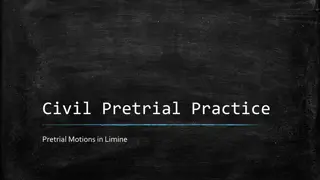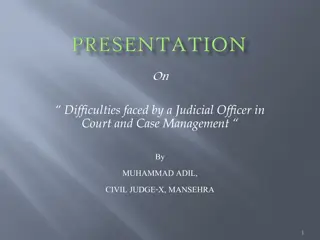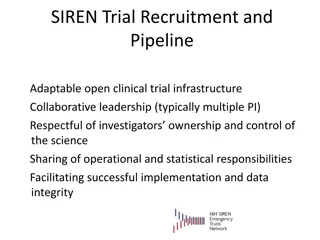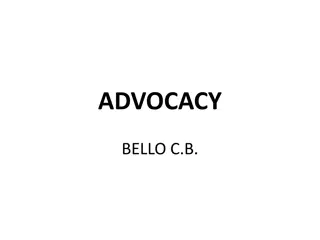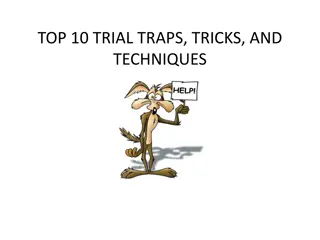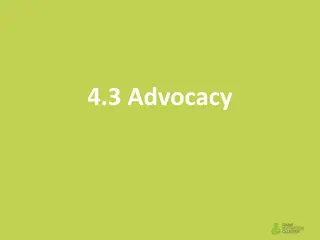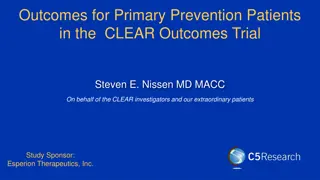Understanding Trial Advocacy: Stages and Differences
Explore the key stages of trial advocacy, from pretrial motions to closing arguments, and learn about the distinctions between civil and criminal trials. Gain insights into the process of building a compelling case, engaging with jurors, and presenting evidence effectively.
Download Presentation

Please find below an Image/Link to download the presentation.
The content on the website is provided AS IS for your information and personal use only. It may not be sold, licensed, or shared on other websites without obtaining consent from the author. Download presentation by click this link. If you encounter any issues during the download, it is possible that the publisher has removed the file from their server.
E N D
Presentation Transcript
Advocacy Survey Trial Advocacy
Stages of Trial: Pretrial Motions Used to establish procedural and evidentiary protocols. Primarily in civil cases referred to as Motions in Limine (i.e. TX Rules of Evidence 404, 405). Establish rapport with the judge.
Stages of Trial: Voir Dire The purpose of voir dire is to get a sense of how potential jurors feel about the issues in your case. The more you (as an attorney) talk, the less you learn. Who do you strike?
Stages of Trial: Opening Statements The purpose of an opening statement is to tell the jury your story of the case using only the facts for persuasion. Studies have shown that a majority of jurors make up their mind about the case after opening statements.
Stages of Trial: Direct Examination The purpose of direct examination is to tell the jury your story of the case through your witnesses. Use only non-leading questions what, where, how, when, explain, tell You want the jury to focus on the witness.
Stages of Trial: Cross Examination The purpose of cross examination is to poke holes in the other party s case. Use only leading questions You did not go into the store, did you? One fact per question. Never ask a question that you don t know the answer to.
Stages of Trial: Closing Argument The purpose of closing argument is to tell the jury your story of the case using facts and evidence together in a persuasive way. It is your last chance to connect with the jury before they deliberate. Use the jury charge effectively.
Differences between Civil Trials and Criminal Trials (http://www.laits.utexas.edu/gov310/JU/civcrim/index.html) Civil Criminal Parties Individuals or groups Government and an alleged criminal At issue Court must determine whether one party has caused harm to another party; case deals with rights and duties between individuals Harm to private person or group Court must determine whether one party has violated a statute that prohibits some type of activity Type of Wrongdoing Transgression against society Penalty or Remedy Compensation for damages or loss Punishment (fine, imprisonment, rehabilitation, etc.) Burden of Proof Preponderance of the evidence Guilt beyond a reasonable doubt



